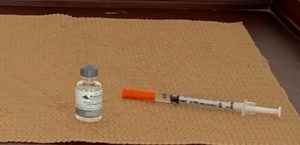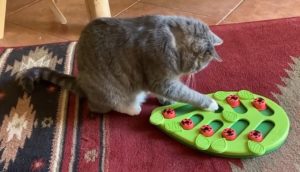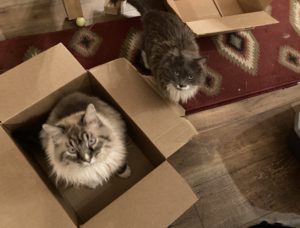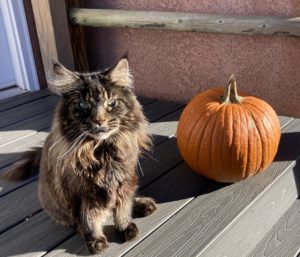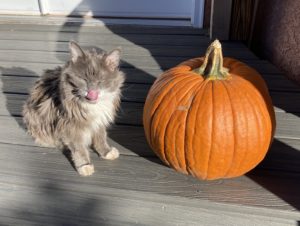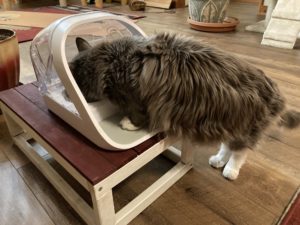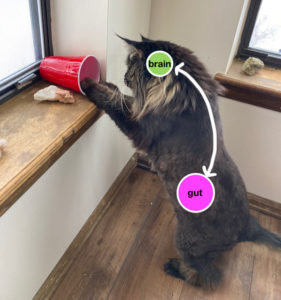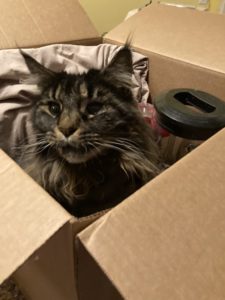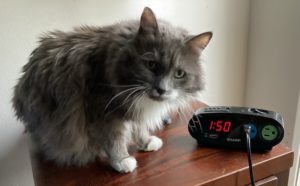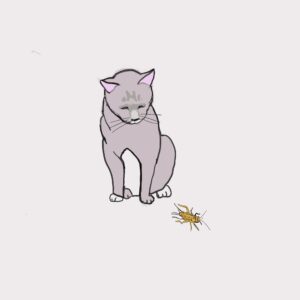
Sustainability is a word you hear a lot these days, as more and more people compete for natural resources and deal with the effects of climate change. Sustainability is defined as “meeting the needs of the present without compromising the ability of future generations to meet their own needs” (United Nations Brundtland Commission 1987). So, you recycle plastics, take reusable bags to the grocery store, and limit the use of your car to reduce your “carbon footprint”.
How can you care for your cat sustainably? How can you go about reducing your cat’s carbon pawprint? In this post, we will talk about one of the recent trends in pet food aimed at sustainability: the use of insects as a food source (Reference 1)
reducing your cat’s carbon pawprint
Do Insect-based Foods Provide Sufficient Nutrition for Cats?
Our cats are obligate carnivores and are designed to eat primarily meat. Since many of our cats live indoors with us, they are not out hunting – we provide them meat-based cat food. Raising food animals (chickens, cattle, pigs…) for pet food produces significant amounts of greenhouse gases (carbon dioxide, methane, water vapor…) and so is not very sustainable.
Insect Nutrition
- Meal made from insects has as much protein as animal meal.
- Insects have amino acids that are very similar to those in animals and cats are able to digest these.
- Insect larvae are a good source of energy due to their fat content.
- Insects are rich in minerals and provide necessary dietary fiber.
- Insects are more protein dense – per weight, it takes 3 times more chicken leg meat to provide the same protein as insect meal.
- Insects make up 2% or more of a feral cat’s diet.
Reducing Your Cat’s Carbon Pawprint by Feeding Insect-based Foods
- Insects require less water and land use than food animals.
- There are lower greenhouse gas emissions when farming insects compared to food animals.
- Mealworms and fly larvae convert 45-55% dietary protein into edible body mass compared to the 33% conversion rate of a chicken.
- Insects can feed on fruit and vegetable by products, household waste, slaughter plant waste and convert this into edible food.
What Insects are Used for Pet Food?
There are three insects currently used in animal foods: black soldier fly larvae, mealworm larvae, and adult house crickets. Black soldier fly larvae are most commonly used in pet foods.
Are Insect Foods Safe for Our Pets?
The insect larvae are blanched, chilled or frozen, then dried and ground into meal. In the process, moisture is removed, reducing microorgansims and inactivating enzymes that cause spoilage. Heat treatment of the meal when making pelleted foods helps reduce bacteria and microorganisms.
Most insect bacteria and viruses usually do not affect animals and humans. However, insects can be vectors of some pathogens, parasites, and prions. Feeding the insects on vegetable waste (and not animal waste) makes insect food safer.
More studies aimed specifically at cats eating insect-based foods are needed.
Do I want my cat to eat bugs?
In Asia, Africa and South America, it is not uncommon to find insects on the menu. Chapulines or fried grasshoppers can also be found in restaurants in Mexico and even in California and Texas. However, insect consumption is not widespread in western countries.
Researchers from Oklahoma State University conducted a survey of 1,021 Americans in 2021 to see if they would be more willing to consume food containing powdered crickets than raw oysters (a food that although widely eaten is viewed as “yucky” by some). The findings: about one-third of Americans are willing to both try and consume insect products on a regular basis, provided they are tasty and safe to eat. (see Reference 2)
Another survey (Reference 3) in the United States that targeted dog owners found that participants:
- were more likely themselves to try food made with insect flour than to eat the whole insects
- were more willing to incorporate insect meal but not whole insects into their dogs’ diets.
Where Can I Buy Insect-based Cat Food?
A casual Internet search turned up a handful of companies marketing cat foods with insect protein. Most of these are based in Europe and Asia. The only cat food that I could easily purchase in the US is made by the Canadian company Catit. Catit offers dry cat food mixes of insect protein with chicken or herring called Catit Nuna. I contacted Catit regarding feeding trials with these foods. They responded that Catit Nuna is formulated by pet nutritionists and has undergone feeding trials per AAFCO protocols for acceptability, digestibility and palatability.
Insect-based cat foods certainly sound like they may offer some options in reducing your cat’s carbon pawprint. However, it looks like we will need to wait for more research and development before these foods become mainstream.
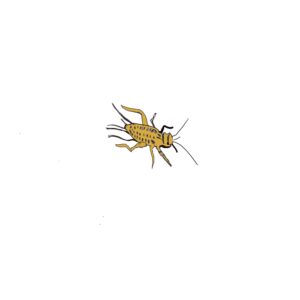 REFERENCES:
REFERENCES:
- Valdes et al., Insects as Feed for Companion and Exotic Pets: A Current Trend. Animals 2022, 12, 1450. https://doi.org/10.3390/ani12111450
- Melissa Reed, Bailey F. Norwood, W. Wyatt Hoback, Angel Riggs, A survey of willingness to consume insects and a measure of college student perceptions of insect consumption using Q methodology, Future Foods,Volume 4, 2021,100046,ISSN 2666-8335, https://doi.org/10.1016/j.fufo.2021.100046.
- Jennifer E. Higa, Matthew B. Ruby, Paul Rozin, Americans’ acceptance of black soldier fly larvae as food for themselves, their dogs, and farmed animals, Food Quality and Preference,Volume 90,2021, 104119, ISSN 0950-3293, https://doi.org/10.1016/j.foodqual.2020.104119.
Want to keep up with the world of cats? Subscribe to The Feline Purrspective!

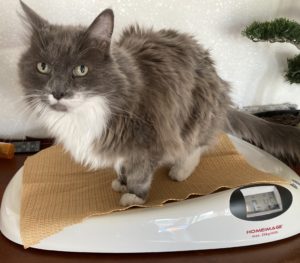
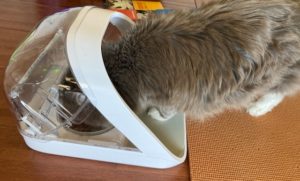
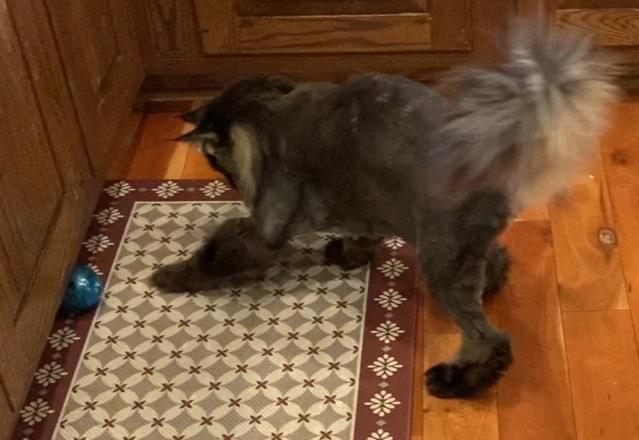
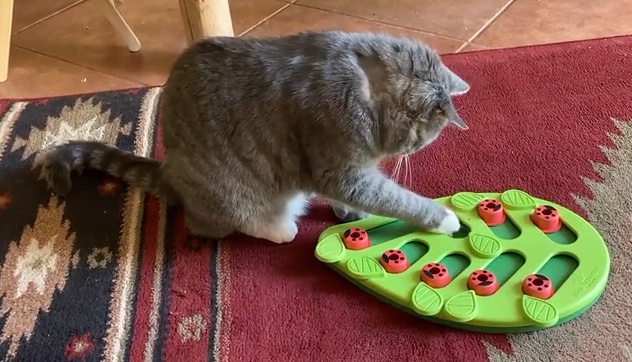 Why slide a block aside to uncover food when there is food freely available in a bowl nearby? Psychologists call the behavior “
Why slide a block aside to uncover food when there is food freely available in a bowl nearby? Psychologists call the behavior “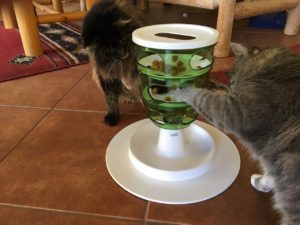
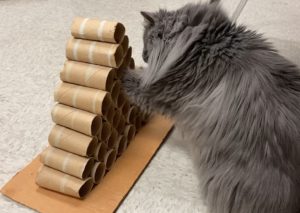
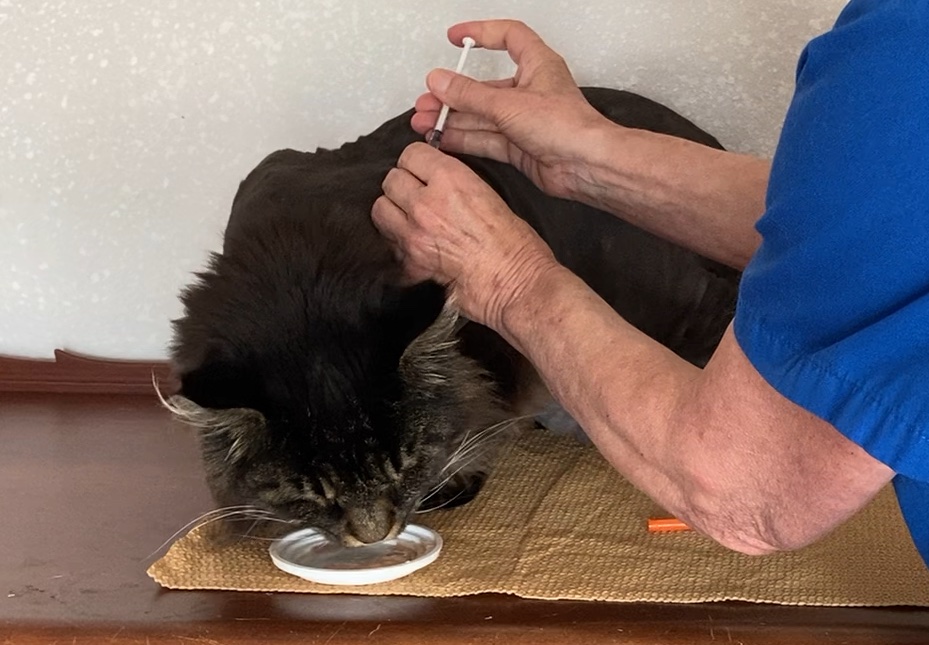
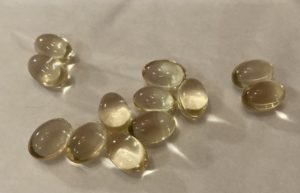 Supplementation with fish oils has shown some benefit for arthritic cats.
Supplementation with fish oils has shown some benefit for arthritic cats. 